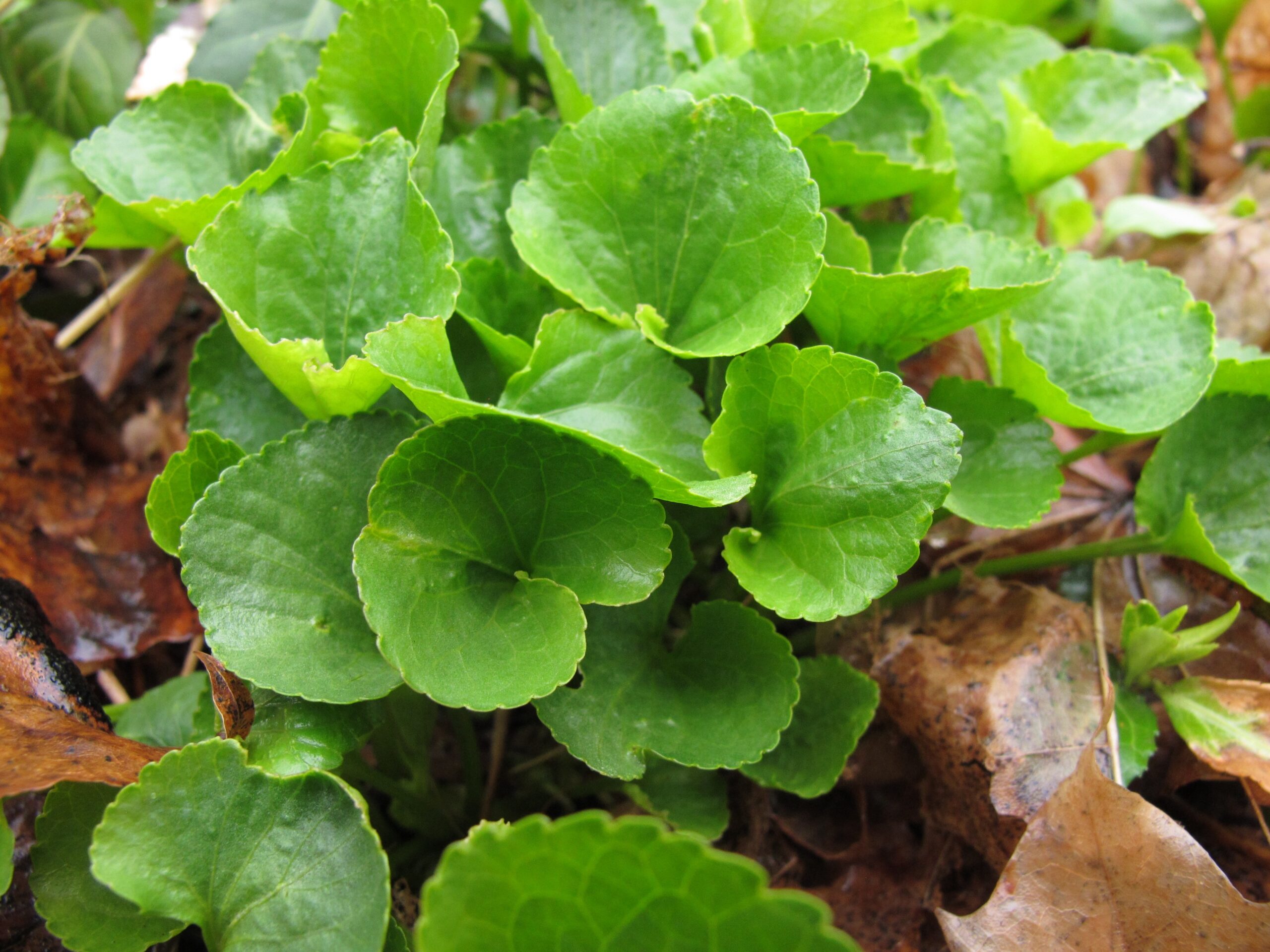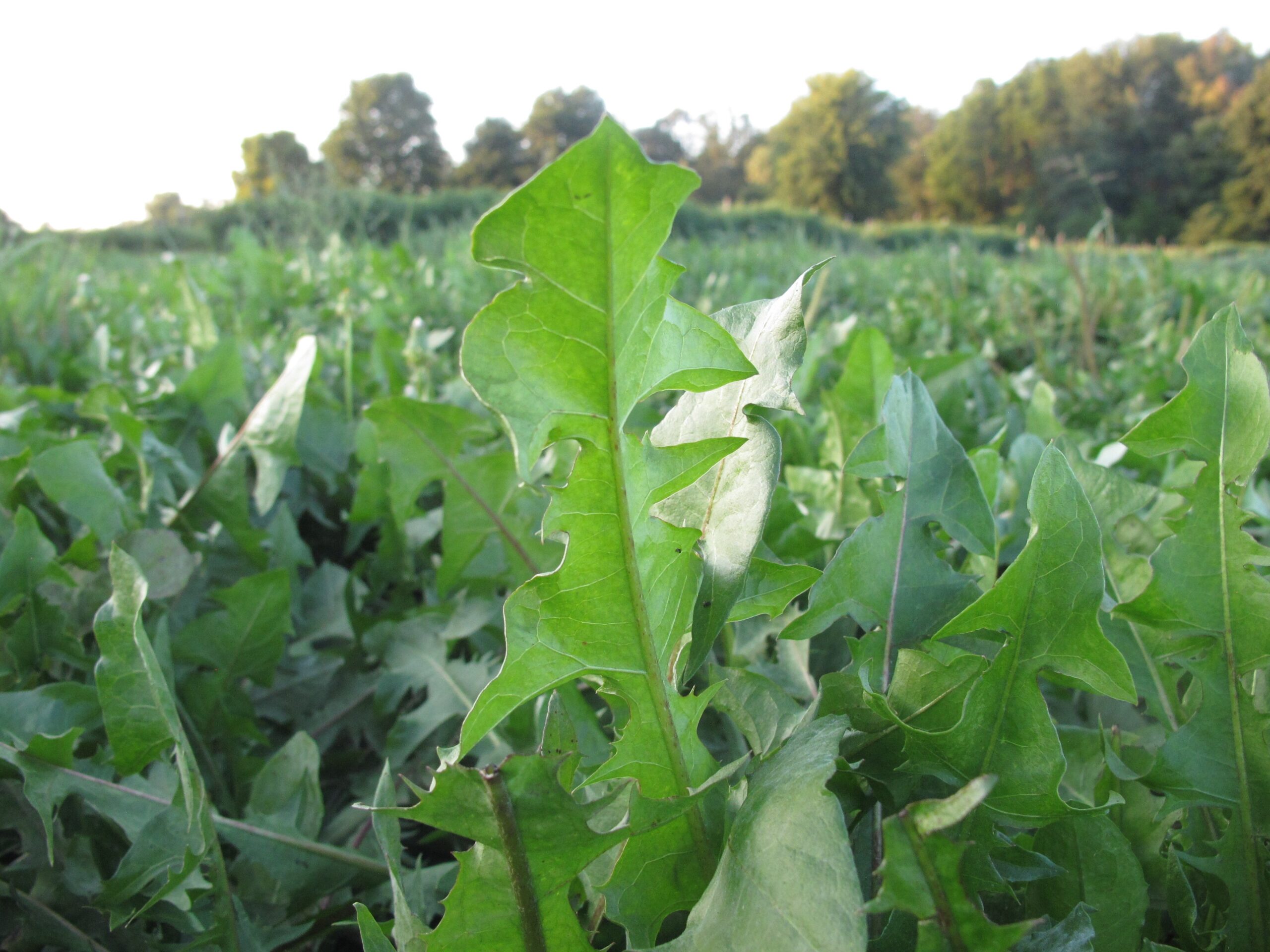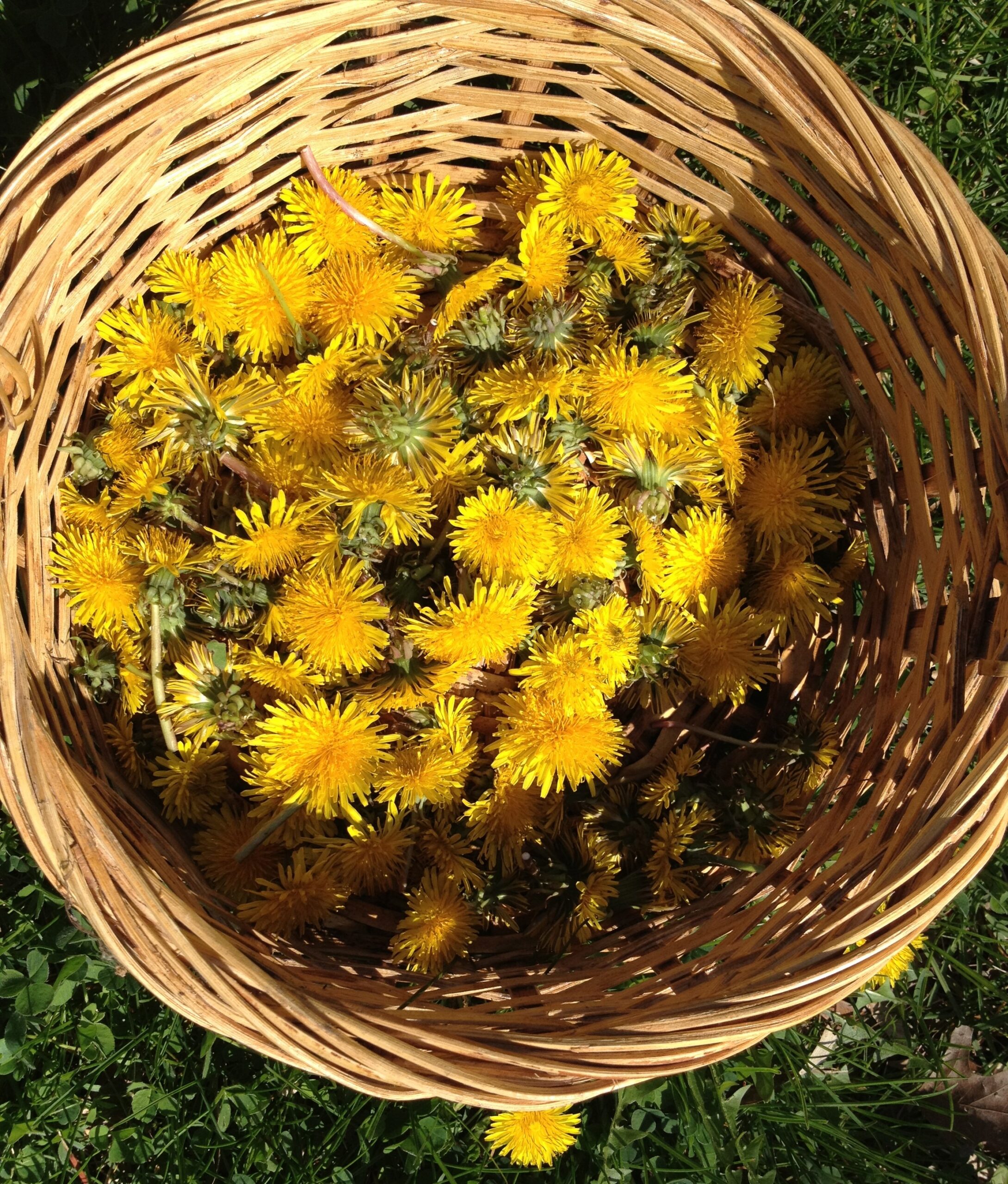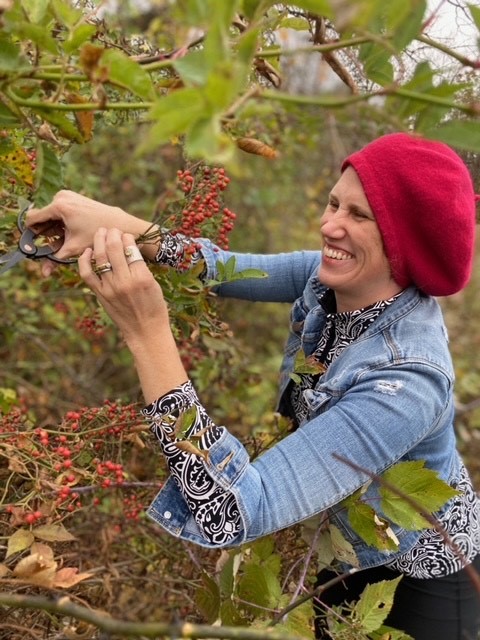
This story is a part of “A Year in the Wild Kitchen of the Great Lakes,” a series in partnership with expert forager Lisa M. Rose with the mission of nurturing a deeper connection with the natural world through foraging.
As spring unfolds its vibrant hues, what better way to celebrate the season than by embracing the often overlooked splendor of dandelions and violets? In this guide, we’ll explore how these “unlovable weeds” can be transformed into delightful additions to your spring cuisine. These common plants are not only a treat for the eyes and good for the soil, but are an easy boon for backyard foragers and gardeners.
The Delicate Violet: A Forager’s Joy
Violets, the shy beauties of spring, begin their display in early April and continue through May. Thriving in the dappled shade of undisturbed fields and untrimmed lawns, these members of the Viola species are a forager’s dream. With soft, heart-shaped leaves arranged in a basal rosette and flowers ranging from white and blue to vibrant purple, violets are not only easy to identify but also a joy to collect.

Dandelions and redbud blossoms are a welcome sign of spring. (Photo Credit: Lisa M. Rose)
Harvesting violets is straightforward — pluck the clean leaves and store them wrapped in a moist towel in the refrigerator, washing them only when ready to use. The flowers, best picked on a dry day, are perfect for garnishing dishes or making a soothing tea. The leaves, rich in vitamin C, offer a mild, slightly lemony flavor that adds a fresh twist to salads or smoothies.

With soft, heart-shaped leaves arranged in a basal rosette and flowers ranging from white and blue to vibrant purple, violets are not only easy to identify but also a joy to collect. (Photo Credit: Lisa M. Rose)
Violets are not just a source of food but also a sustainable — and easy choice for foragers. They are prolific growers, and their clumps can be easily transplanted to propagate new foraging grounds. Engaging in the tradition of foraging violets connects us more deeply with our local environments, allowing us to appreciate and utilize what nature offers right at our doorsteps.

The flowers, best picked on a dry day, are perfect for garnishing dishes or making a soothing tea. (Photo Credit: Lisa M. Rose)
The Robust Dandelion: From Weed to Feast
In contrast to the delicate violet, the dandelion is a robust plant that emerges as a resource for culinary and nutritional purposes. Known scientifically as Taraxacum officinale, this “weed” is easily recognizable by its jagged leaves and bright yellow flowers. Dandelions are among the first edible greens of spring, offering a burst of flavor and nutrition right from your backyard.

Violet leaves are one of my favorite early spring greens, delicious and tender in a spring salad. (Photo Credit: Lisa M. Rose)
The best time for harvesting dandelions is early spring for the tenderest leaves and mid-spring for the flowers. The roots can be collected throughout the season and are especially flavorful when roasted, making a great coffee substitute or an addition to teas.

The flowers, best picked on a dry day, are perfect for garnishing dishes or making a soothing tea. (Photo Credit: Lisa M. Rose)
When foraging dandelions, use shears or your hands to collect the leaves, choosing plants in shaded areas for sweeter, less bitter leaves. Flowers should be collected carefully to avoid washing, while roots require gentle extraction with a tool to avoid breaking.
Dandelions are surprisingly underutilized, given their abundance and nutritional benefits. They can transform ordinary salads with their young leaves, especially when dressed with a light lemon vinaigrette to temper their natural bitterness.
Foraging with Care
When foraging for either violets or dandelions, it’s crucial to ensure that you’re collecting from areas free of chemical treatments or pollutants. Proper identification and mindful harvesting can help maintain the health of the plants and the ecosystems where they thrive.
Featuring the Weeds: A Wild, Spring Celebration Menu
Whether you’re looking to enhance a salad, brew a unique tea, or simply enjoy the act of foraging, these plants offer endless possibilities. So next time you pass by a patch of violets or spot a clump of dandelions, consider stopping to appreciate, gather, and taste the bountiful gifts of spring.
This spring celebration menu helps inspire culinary creativity and encourages you to embrace the simple beauty of violets and the robust versatility of dandelions. As you will see, these plants can add not only color and flavor to your dishes but also a touch of wildness to your culinary adventures.
Appetizer: Violet Petal and Goat Cheese Crostini
Crisp crostini topped with creamy goat cheese, fresh violet petals, and a drizzle of honey. This appetizer is not only visually appealing but also offers a burst of floral and creamy flavors.
Salad: Spring Green Salad with Dandelion Leaves and Violets
A light and refreshing salad combining tender dandelion greens, violet leaves, sliced strawberries, and toasted almonds, dressed with a vinaigrette and garnished with the petals of the dandelion and violet flowers. This salad is both nutritious and bursting with the fresh flavors and the vibrant hues of spring.
Main Course: Herb-Roasted Chicken with Dandelion and Violet Garnish
Juicy, herb-roasted chicken breasts garnished with a sprinkle of chopped dandelion greens and violet flowers. The herbs and floral notes bring a fresh and slightly earthy flavor to this comforting main dish.
Side Dish: Dandelion Risotto
Creamy risotto made with finely chopped dandelion roots, Parmesan cheese, and a hint of garlic. This dish showcases the earthy flavor of dandelion roots, making it a hearty and satisfying side. Sauteed dandelion greens can add a dimension of flavor and nutrition to this hearty risotto.
Dessert: Violet Jelly Tartlets
Small, sweet pastry tartlets filled with homemade violet jelly and topped with a dollop of crème fraîche. The stunning color and subtle floral flavor of the violet jelly make this dessert a showstopper.
Beverage: Dandelion and Lemon Tea
A soothing and detoxifying tea made from steeped dandelion leaves and a splash of lemon. This beverage is perfect for cleansing the palate and offers a gentle finish to the feast.
Recipe: Violet Jelly Tartlets
Embrace the delicate flavors of spring with these enchanting Violet Jelly Tartlets. Perfect for afternoon teas, spring gatherings, or as a refined dessert after a family meal, these tartlets promise to be a memorable part of your seasonal celebration. The vibrant, jewel-toned filling is not only a feast for the eyes but also a delightful exploration of taste, blending the subtle floral notes of violet with the creamy richness of crème fraîche. Follow the directions provided in the earlier text to create this unique and stunning dessert.
Ingredients for Violet Jelly:
- 2 cups fresh violet flowers (thoroughly cleaned)
- 2 cups boiling water
- Juice of 1 large lemon
- 2 cups granulated sugar
- 1 package (2 teaspoons) powdered pectin
Ingredients for Tartlets:
- 1 ¼ cups all-purpose flour
- ¼ teaspoon salt
- 1/3 cup unsalted butter, chilled and diced
- 1 tablespoon granulated sugar
- 4 to 5 tablespoons ice water
- Crème fraîche, for topping
Directions
Making the Violet Jelly:
- Infuse the Flowers: Place the cleaned violet flowers in a heatproof bowl. Pour the boiling water over the violets, cover, and let them steep overnight. The water will turn a beautiful blue.
- Prepare the Jelly Mixture: Strain the violet infusion through a fine mesh sieve, pressing on the flowers to extract as much liquid as possible. Discard the solids.
- Add Lemon Juice: Stir the lemon juice into the violet infusion; the color should change to a vibrant pink or purple.
- Cook the Jelly: In a saucepan, mix the pectin with a small amount of the sugar. Add the violet liquid and bring to a boil, stirring constantly. Add the remaining sugar once it reaches a boil. Continue to boil for 1 minute, then remove from heat.
- Set the Jelly: Pour the jelly into a clean container and let it cool. Refrigerate until set (about 4-6 hours or overnight).
Making the Tartlet Shells:
- Prepare the Dough: In a mixing bowl, combine flour, salt, and sugar. Cut in the butter until the mixture resembles coarse crumbs. Gradually add ice water, stirring until the dough forms a ball.
- Chill: Wrap the dough in plastic and refrigerate for at least 30 minutes.
- Preheat Oven: Preheat your oven to 375°F (190°C).
- Form Tartlets: Roll out the dough on a floured surface. Cut into rounds slightly larger than your tartlet pans. Press the dough into tartlet pans, trimming the edges. Prick the bottom with a fork.
- Bake: Bake the tartlet shells in the preheated oven for about 12-15 minutes or until golden brown. Remove from the oven and let cool.
Assembling the Tartlets:
- Fill the Shells: Spoon the violet jelly into the cooled tartlet shells.
- Top with Crème Fraîche: Add a dollop of crème fraîche to each tartlet just before serving.
These Violet Jelly Tartlets are not only visually stunning but also provide a unique taste experience that’s sure to delight your guests. The floral notes of the violet jelly paired with the creamy texture of crème fraîche make for a memorable dessert.
About the Author

Lisa M. Rose is an ethnobotanist, wild foods chef, and author with a profound dedication to exploring the symbiotic relationship between humans and plants. With an academic background in anthropology and community health, her culinary journey has been rich and varied, including stints with notable establishments and figures such as Stags Leap in Napa Valley, Alice Waters’ The Edible Schoolyard, and organic farmers in Northern Michigan.
Rose’s work is celebrated in her bestselling books, “Midwest Foraging” and “Midwest Medicinal Plants,” among others and her expertise is frequently sought by major media outlets, including the Chicago Tribune, PBS, NPR, Martha Stewart and CNN.
Catch more news at Great Lakes Now:
A Fleeting Wild Taste of Spring Ephemerals: Ramps and Ostrich Fern
Your Foraging Journey: A Framework to Sustainable and Safe Practices
Featured image: The flowers, best picked on a dry day, are perfect for garnishing dishes or making a soothing tea. (Photo Credit: Lisa M. Rose)




